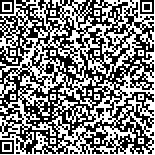下载中心
优秀审稿专家
优秀论文
相关链接
摘要

地理大数据是地理对象所产生的“足迹数据”,而地理大数据挖掘就是通过反演分析地理对象的“足迹数据”,揭示其中蕴含的人地关系及其时空模式。近年关于地理大数据的重大研究进展显示,其研究结论的取得大多需要借助多种大数据的信息综合。为此,本文提出研究地理大数据聚合的必要性:代表新的研究范式、产生新的研究视角、提升研究的全面性,并将地理大数据聚合定义为:不同地理大数据之间通过转换形成面向研究对象的多维数据集合。在阐述地理大数据分类和特点的基础上,将地理大数据聚合分为:时空聚合、面向对象聚合、面向主题聚合以及面向模型聚合四种类型。地理大数据聚合作为地理大数据挖掘的重要组成部分,其过程大致可以分为:确定内核—信息溯源—反演汇聚3个步骤,而其中的关键科学问题包括:统一时空框架和基准、统一数据表达与存储、匹配同一观测对象的多数据源、统一多源数据的时空范围、调和不同对象之间不同的变化速率、解决数据共享与隐私保护、大数据与小数据的聚合等。地理大数据聚合方法与技术的发展,将会拓展地方的感知、土地功能的识别、对人群的观测与理解、功能与流动之间关系、地表复杂巨系统等新领域的研究。
Big geodata can be regarded as the “footprints” generated by geographic objects, which are divided into two types: big earth observation data and big social behavior data. Big earth observation data refer to remote sensing data and all kinds of monitoring data from ground observation stations; big social behavior data are defined as the data generated by humans, such as mobile phone data, traffic card data, social media data, and trajectory data of floating cars. Big earth observation data contain the information of land surface, and big social behavior data record the social behavior of humans. The essence of big geodata mining is to reveal the man-land relationship via the retrieval of the “footprint” of geographic objects. Magnificent progresses in recent years demonstrate that most of them have been made through the aggregation of multiple types of big geodata. The significance of big geodata aggregation can be summarized into three aspects: to represent a new research paradigm, to produce a new research angle, and to improve the research quality by combining different types of information. In contrast to image fusion, which is regarded as the combination of imageries with the same data structure, big geodata aggregation is defined as the merging of different types of big geodata into a multidimensional dataset through transformation in terms of structure, content, and representation. In general, big geodata aggregation includes big earth observation data and big social behavior data. Given the differences in data source, data structure, connotation, and granularity, the aggregation procedure is various and complicated. Considering the characteristics and the classification of big geodata, we classify big geodata aggregation into four types: spatiotemporal aggregation, object-oriented aggregation, topic-oriented aggregation, and model-oriented aggregation. In spatiotemporal aggregation, data are merged via their common locations, such as the aggregation between POI and remote sensing data. In object-oriented aggregation, data are connected through the same object, such as the aggregation of indoor and outdoor trajectory data via the same phone carrier. In topic-oriented aggregation, data with the same topic are integrated, such as the aggregation of different types of information sourced from the same earthquake event. In model-oriented aggregation, data are assimilated via the same model, such as the aggregation of street view data and POI data when using a deep learning model for the recognition of building style. As an important part of big geodata mining, the procedure of big geodata aggregation can be divided into four steps: the determination of the aggregation core, information back tracking, retrieving, and converging. The key issues in big geodata aggregation include unifying spatiotemporal benchmarks, uniting data representation and storage, matching multisource big geodata from the same geo-object, centralizing the spatiotemporal scope of multisource big geodata, settling the changing velocities of different objects, solving data-sharing and privacy protection problems, and aggregating big and small geodata. With the development of methods and techniques of big geodata aggregation, some research areas, including the sensing of places, the identification of land functions, the detection of crowd activities, the determination of the relationship between urban functions and multisource flow, and the introduction of a land surface complex giant system, may be substantially expanded.

